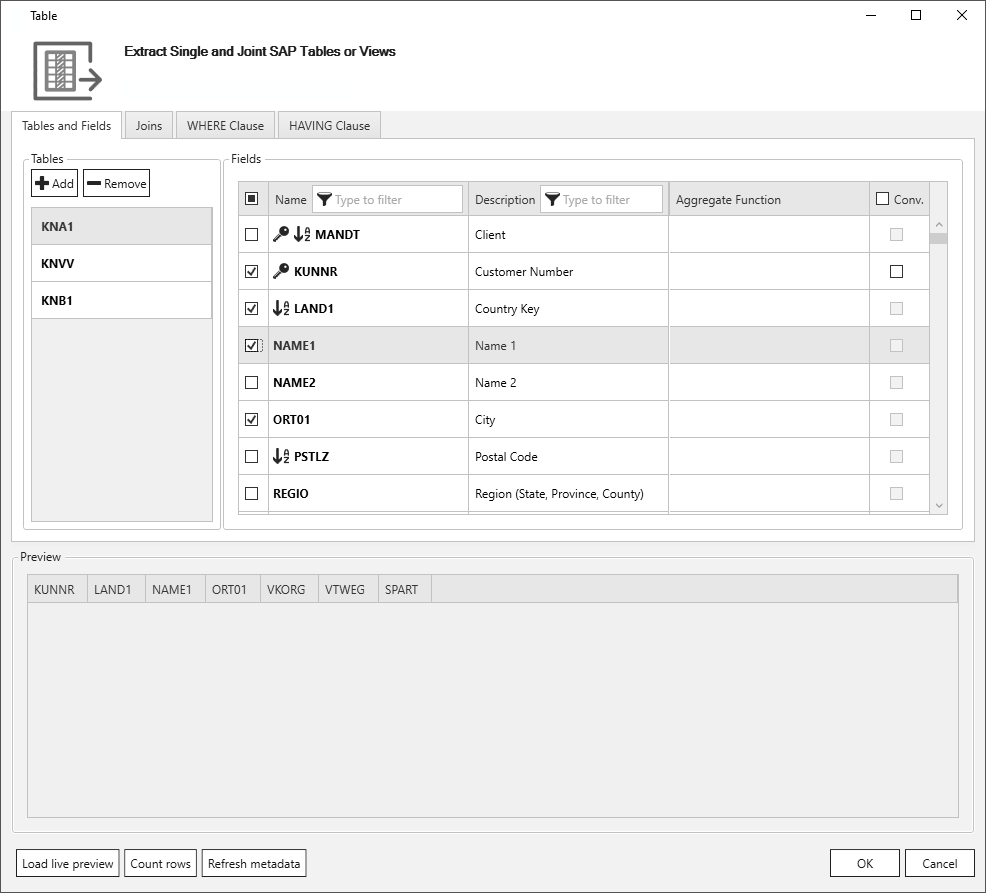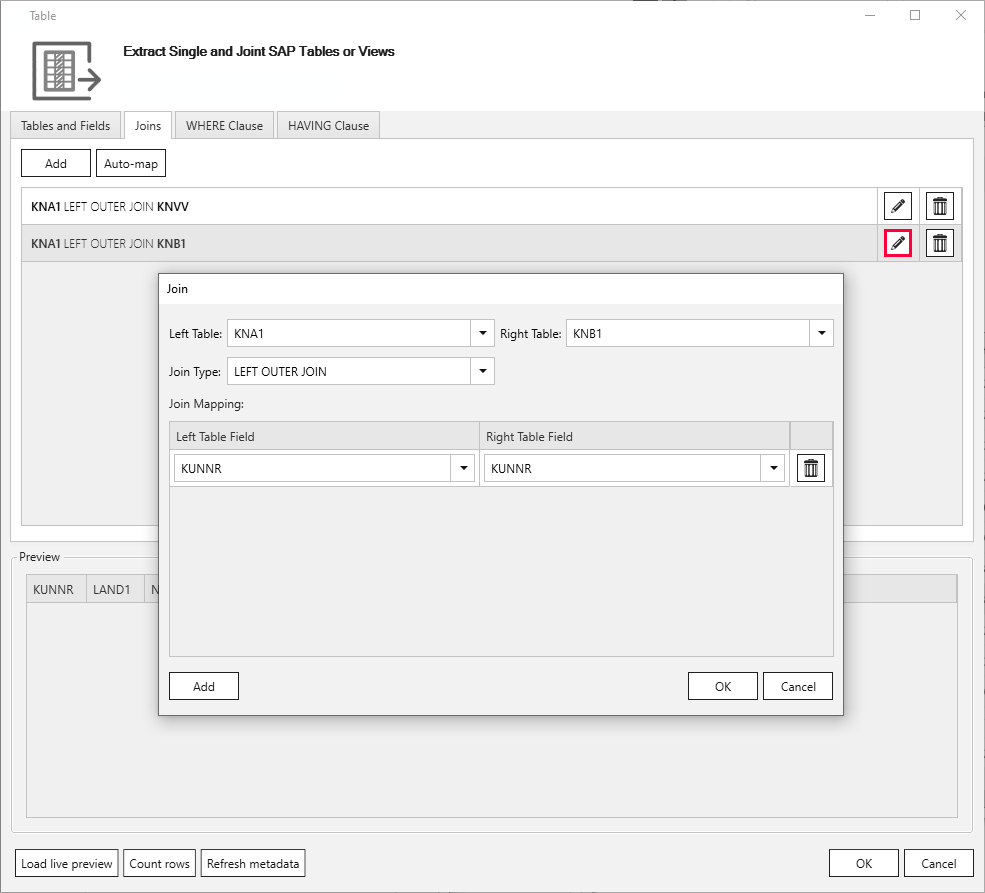Join Functionality #
As of Xtract IS version 5.0.0 table joins can be defined in the Joins tab of the Xtract Table component.
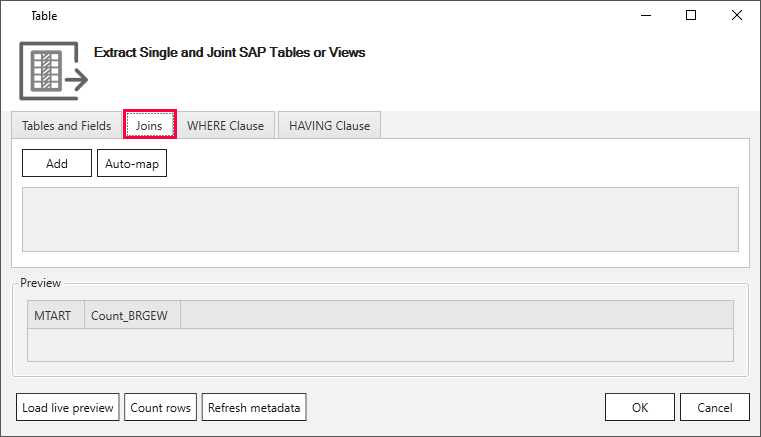
The Join functionality allows joining two or more tables and extract the result of the join.
To perform the extraction the corresponding SQL command is generated dynamically and the join is executed on the SAP server.
Possible scenarios can be joining tables for header and item data or tables for master data and texts.
Supported join types:
- Inner Join
- Left Outer Join, also referred to as Left Join.
For more information on join types see SAP Online Help.
Note: To use table join, the function module /THEO/READ_TABLE needs to be available in SAP.
Note: Joining of cluster or pool tables is not supported. Cluster or pool tables need to be extracted individually and joined in the destination.
Joining two Tables #
The following example shows how to join the tables KNA1 and KNVV.
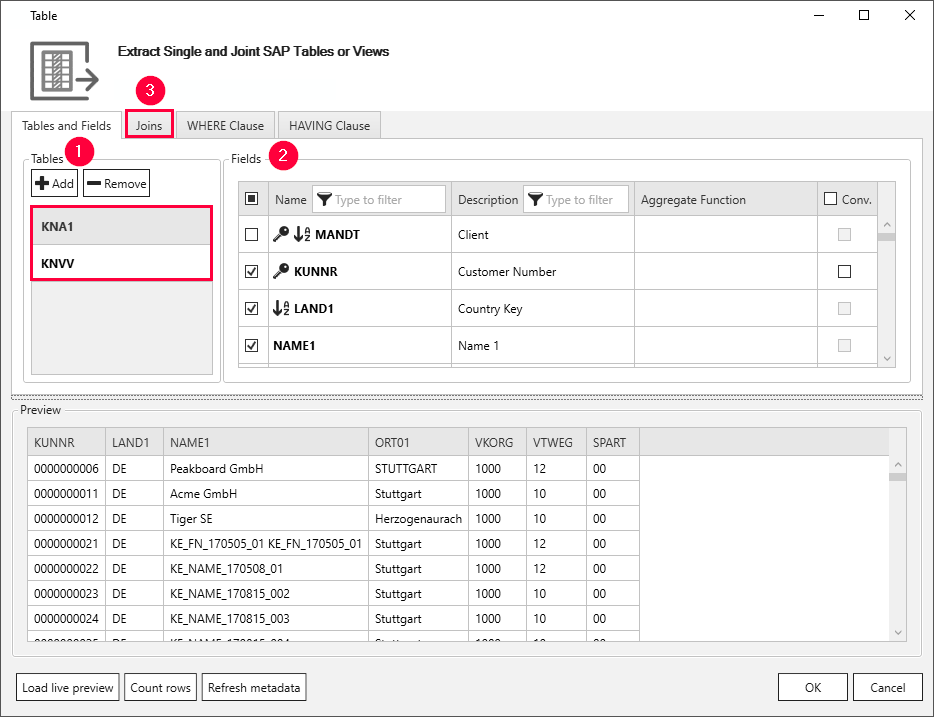
- In the tab Tables and Fields, click [Add] (1) to add two tables (e.g., KNA1 and KNVV).
- Select both tables on the left and check the fields you want to extract (2).
- Switch to the Joins (3) tab to define the join condition. A Join condition is automatically preset. The Join condition is based on the foreign key relationship of the joined tables,
- Optional: Switch to the WHERE clause tab and specify a WHERE clause.
Note: Be careful of WHERE clause restrictions when specifying a WHERE-clause to the right table of table joins using a LEFT OUTER JOIN.
In the Joins tab, click ![]() to display joining options.
to display joining options.
In the depicted example a left outer join on tables KNA1 (left table) and KNVV (right table) on the field KUNNR is performed. A WHERE clause on KNA1~LAND1 = ‘DE’ is specified.
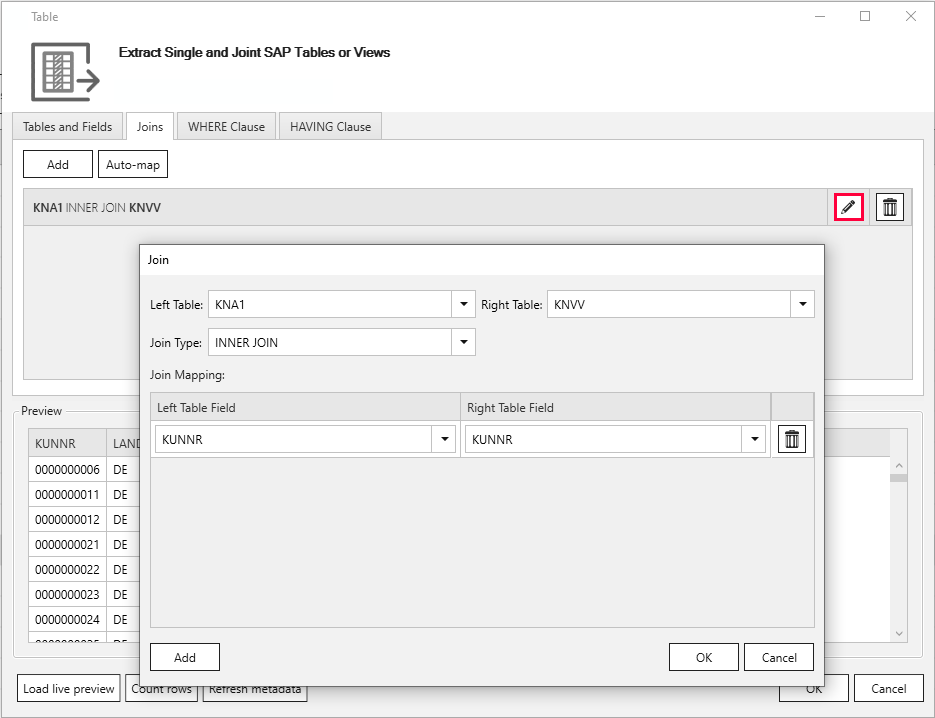
Left Table, Right Table, Join Type and Join Mapping are preset with default values. They can be modified as required. The Join Mapping is based on the foreign key relationship of the joined tables.
- Click [Add] to extend the join condition to more fields.
- Click
 to remove existing joins.
to remove existing joins. - Join additional tables in the tab Tables and Fields.
Recommendation: to avoid poor extraction performance, do not join more than five tables.
Tip: different tables can have identical field names. Defining a join condition based on the identical field names not always delivers the expected result (e.g., VBAK~VBELN <> LIPS~VBELN). Make sure the fields you use in a join condition contain the same content/data.
Auto Mapping Function (optional)
The [Auto-map] button deletes existing join conditions and performs a new field mapping based on the foreign key relationship of the joined tables.
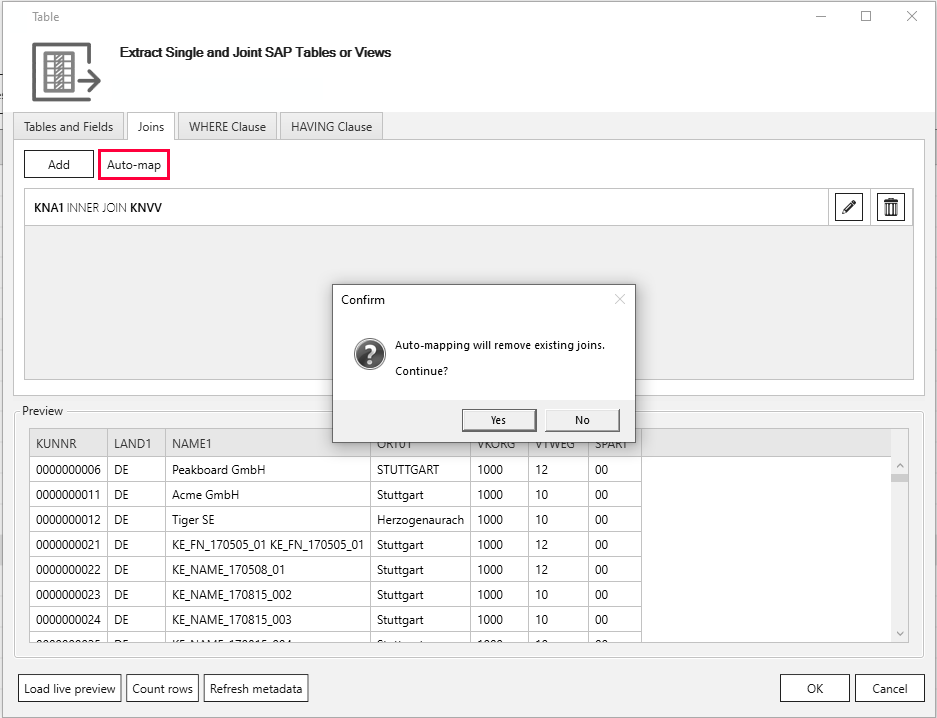
Joining three Tables #
Example of a join with a third table KNB1:
